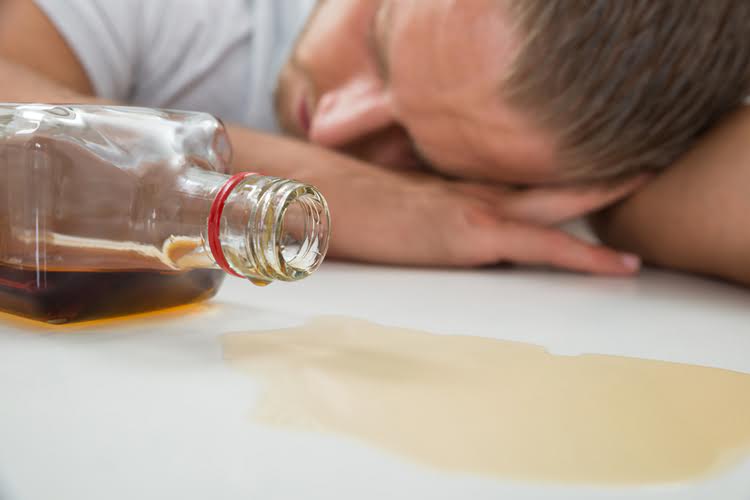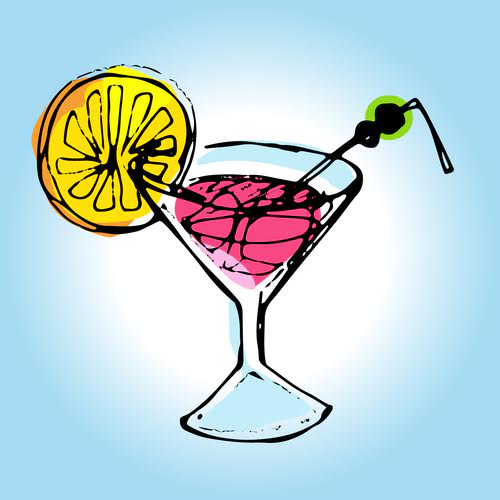Outcome indicators included results of monthly urine drug tests, reports of craving and social function, and adverse events. The results of this study found that at baseline, visual and olfactory cues relating to alcohol resulted in statistically significant increases in fMRI signaling in orbital and cingulate gyri and areas of the frontal gyri. After the intervention, subjects receiving XR-NTX were found to have statistically significant decreases in brain activation, compared to placebo. Subjectively reported cravings were also statistically lower among the group receiving XR-NTX. The study demonstrated that XR-NTX reduced brain reactivity when alcohol-dependent individuals were exposed to visual and olfactory cues that are known triggers of cravings among individuals with alcohol use disorders. The results of this study demonstrated that the group receiving the higher dose of XR-NTX had a statistically significant (25 %) decrease in heavy drinking.
Missed Dose
- Naltrexone works for alcohol addiction treatment by blocking opioid receptors, which reduces the pleasurable effects of alcohol and decreases cravings.
- Internet resources that explain the process of splitting 50-mg tablets or creating a solution and dividing out liquid doses have been found.
- When naltrexone is taken at home, it is usually taken once a day with or without food.
- It is very important that your healthcare provider check your progress at regular visits.
Medications like Sertraline (Zoloft) or Paroxetine (Paxil) may also be prescribed to help manage symptoms. In low doses, Naltrexone is believed to reduce pain through mechanisms that involve modulation of microglial cells in the central nervous system, which play a key role in neuroinflammation and chronic pain. Eating disorders such as binge eating disorder (BED) and bulimia nervosa are thought to involve dysfunction in the brain’s reward pathways, particularly those involving dopamine and endogenous opioids. By blocking these pathways, Naltrexone may reduce the compulsion to naltrexone side effects overeat.
Dosages of Naltrexone
Naltrexone will cause withdrawal symptoms in people who are no longer taking opioids for a period of time. Therefore, naltrexone treatment is started after you are no longer taking opioids for a period of time. The length of time this takes may depend on which opioid you took, the amount you took, and how long you took it. Before you start using this medicine, be sure to tell your healthcare provider if you think you are still having withdrawal symptoms. People who are currently using prescription and/or illicit opioids, including buprenorphine, should not take naltrexone. If you take naltrexone while taking opioids, it could lead to withdrawal symptoms, which may require you to go to the hospital.
If you are interested in learning more about how Naltrexone may benefit you, consider scheduling a telemedicine consultation with one of our providers today. Naltrexone works by temporarily binding and blocking a mechanism called the MU receptor, which is linked to pain. Blocking the receptor tells our bodies that we aren’t producing enough endorphins (our natural pain relievers), and then releases them. Keeping a close watch on patient’s symptoms and use, a WCM physician may increase the Naltrexone dose to 3 mg, and then perhaps 6 mg. Their work with the drug, Naltrexone, is an outgrowth of an international partnership with the UK-based LDN Research Trust Charity. According to The Trust, Naltrexone is safe, non-toxic, and inexpensive, and has been used in the United States since the FDA first approved it in 1984.
Naltrexone injection may cause side effects. Tell your doctor if any of these symptoms are severe or do not go away:
Naltrexone does not directly interact with benzodiazepines, but combining it with other sedatives should be monitored by a healthcare provider to manage risks related to sedation or mental health. Naltrexone is administered only after opioid or alcohol detoxification, to prevent relapse of dependence on these addictive substances. Naltrexone helps reduce dependence and craving for opioids and alcohol by altering the brain’s reinforcing effects on the euphoria and feelings of pleasure these substances produce.
Tell them about all prescription, over-the-counter, and other drugs you take. Also, Alcoholics Anonymous tell them about any vitamins, herbs, and supplements you use. Sharing this information can help you avoid potential interactions. Most of these side effects may go away within a few days to a couple of weeks.

Naltrexone may cause mild side effects other than those listed above. Whether or not naltrexone affects the duration of labor and delivery is unknown. Safe use of naltrexone in rapid opioid detoxification programs has not been established (see ADVERSE REACTIONS).
It works by blocking the euphoric feeling that these substances can give you. You should participate in counseling and support groups while taking this medication. The story of Naltrexone serves as a powerful reminder of the importance of continued medical research and the potential for existing medications to find new applications in treating diverse health conditions. Naltrexone is often used before drinking, known as the Sinclair method, as a way to reduce alcohol use for people who are unable or unwilling https://www.roquetaidees.com/44-inspirational-sobriety-quotes-to-conquer/ to adopt abstinence. Dr. John David Sinclair showed that the longer someone abstained from drinking, the more intense cravings they had, and he called this the “alcohol deprivation effect”. However, when given naltrexone before drinking, the cravings would greatly decrease, resulting in only one alcoholic drink before the person no longer craved alcohol.
CLINICAL PHARMACOLOGY
- If patients maintained on naltrexone use opioid agonists, naltrexone can block their effects—a key feature of its therapeutic efficacy.
- The pharmacokinetic profile of naltrexone suggests that naltrexone and its metabolites may undergo enterohepatic recycling.
- The optimum duration of therapy with naltrexone has not been determined, and additional research on the long-term safety and effectiveness is needed.
- Using alcohol or tobacco with certain medicines may also cause interactions to occur.
- Naltrexone works by blocking opioids and endorphins from acting on the opioid receptors in your brain.
However, if they become more severe or don’t go away, talk with your doctor or pharmacist. To learn about other mild side effects, talk with your doctor or pharmacist, or view the drug’s prescribing information. Naloxone is also combined with buprenorphine in certain drugs prescribed to treat OUD, such as Suboxone and Zubsolv.

Side effects
Although no causal relationship with naltrexone hydrochloride is suspected, physicians should beaware that treatment with naltrexone hydrochloride does not reduce the risk of suicide in these patients(see PRECAUTIONS). Treatment should be initiated with an initial dose of 25 mg of naltrexone hydrochloride tablets. If nowithdrawal signs occur, the patient may be started on 50 mg a day thereafter.

Naltrexone is an opioid receptor antagonist that reduces alcohol cravings, while disulfiram blocks alcohol metabolism, causing severe nausea and vomiting when alcohol is consumed. No, Naltrexone does not cause withdrawal symptoms, but it causes precipitated withdrawal if opioids are still in the system. It works by blocking opioid receptors, and when taken too soon, it rapidly displaces opioids, triggering intense withdrawal symptoms. Naltrexone is only used after a sufficient opioid-free period to prevent precipitated withdrawal in addiction treatment.
Before you have any medical tests, tell the healthcare provider in charge that you are receiving this medicine. This medicine may cause some people to become dizzy, drowsy, or less alert than they are normally. If any of these side effects occur, do not drive, use machines, or do anything else that could be dangerous if you are dizzy or are not alert while you are receiving naltrexone injection. Check with your healthcare provider right away if you have dark urine, general tiredness and weakness, light-colored stools, nausea and vomiting, upper right stomach pain, and yellow eyes and skin. Although certain medicines should not be used together at all, in other cases two different medicines may be used together even if an interaction might occur. In these cases, your doctor may want to change the dose, or other precautions may be necessary.
